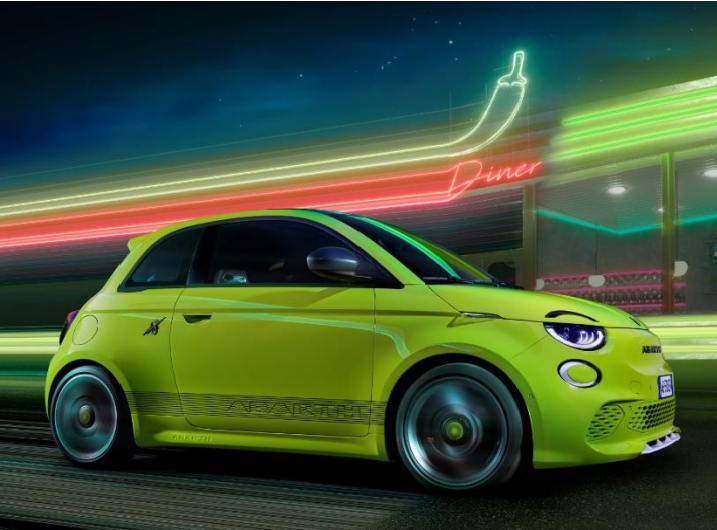In this improved version of the third generation design, the Renault Trafic mid-sized LCV gets smarter looks, a redesigned cabin with extra technology and a range of more efficient 2.0-litre dCi diesel engines.
Background
Renault’s Trafic is one of those vehicles that has quietly inveigled itself into an almost invisible ubiquity. They’re everywhere, but are such a part of the automotive landscape that they barely register. Unless, that is, you’re looking to run a fleet of vans and then the Trafic registers front and centre of your buying decision and has done since it first appeared in Renault dealers back in 1981.
That first generation model was replaced here in 2001 with a second generation model that saw service for thirteen years. In 2015, this third generation model waded into the fray against rivals like the Volkswagen Transporter and the Ford Transit Custom, not to mention its design siblings, the Fiat Talento and the Nissan NV300. It was updated in mid-2019, then again in mid-2021 to create the LCV we’re looking at here.
The Renault Trafic Driving Experience
A full range of expanded and improved 2.0-litre Blue dCi diesel engines suit the needs of all Trafic drivers, with four powertrain options ranging from 110 to 170 horsepower, offering more torque for stronger pulling power. All Blue dCi 110, 130, 150 and 170 versions are coupled with a manual transmission, while the Blue dCi 150 and Blue dCi 170 are also available with an EDC dual-clutch automatic gearbox.
What else? Well the driving position’s as commanding as you would expect and big door mirrors with convex surfacing on their lower and outer edges are present and correct to help with manoeuvring that can be aided by the neat wide angle mirror fitted to the back of the passenger sun visor. Further embellishments intended to help you avoid urban scrapes include options like parking sensors and two kinds of rear view camera. Another thoughtful touch is the ‘Eco Mode’ you can select by pressing this button by the gearstick. This restricts the pulling power of the engine and promotes greater efficiency.
The Renault Trafic Design and Build
True, there’s only so much a van designer can do with a rectangular box with a wheel at each corner, but there’s clearly been a concerted effort to distinguish the Trafic from the workaday LCV norm. This revised model gets more expressive front-end design, with full-LED headlamps incorporated into a C-shaped lighting signature that represents the identity of the Renault line. A bolder upright grille and smarter wheel designs complete the changes.
Inside, there’s a smarter dashboard design defined by a horizontal trim feature that stretches across the width of the cabin and into the door panels, giving a greater sense of space. A revised instrument panel features additional chrome detailing, which also features on the door panels and gear lever. Naturally, the interior of New Trafic continues to offer one of the best storage capacities in the market with 84-litres of stowage space, including under passenger seat storage of 54-litres. Additionally, by folding down the backrest of the middle seat, the New Trafic’s cabin transforms into a mobile office, with enough space for a laptop and an A4-size swivel stand to hold working documents. The backrest of the central seat can also be used for a comfortable lunch break in bad weather.
Connectivity and the office-like feel of the interior are intensified with the availability of on-board multimedia solutions. Renault’s EASY LINK infotainment system offers drivers control over multimedia and vehicle settings via an 8.0-inch touchscreen display, with integrated navigation and Apple CarPlay and Android Auto smartphone connectivity. A wireless phone charger, three USB ports and a 4.2-inch colour display in the instrument panel add greater convenience.
The Renault Trafic Market and Model
The Trafic is offered in two body lengths and two roof heights. Prices start at just over £25,000 ex VAT. Depending on the version, there are a choice of four trim levels – ‘Business’, ‘Business+’, ‘Sport’ and ‘Sport+’. In addition to the Panel Van version, and as with the previous model, the Trafic is available in Passenger and SpaceClass body styles. Both variants benefit from the improved styling and drivetrain upgrades of the Panel Van, with the family-focused Passenger also receiving new upholstery, rear air conditioning booster and sliding windows.
Nine new Advanced Driver Assistance Systems are now included, along with a new front airbag that protects both passengers. Among the features available are adaptive cruise control, lane-departure warning, blind spot warning, active emergency braking, traffic sign recognition with overspeed alert, driver attention alert and automatic high and low beam for the full LED lights. Aiding manoeuvres are front, rear and side parking sensors, plus rear parking camera.
This improved Trafic is available with a comprehensive suite of customer finance packages including a 5 Year PRO+ Promise designed to offer a complete peace of mind package for customers. This integrates 5 Years’ 0% APR Finance, 5 Years’ or 100,000 miles Free Servicing, 5 Years’ or 100,000 miles Warranty and 5 Years’ Roadside Assistance.
The Renault Trafic Practicalities & Costs
The Trafic panel van is offered in two lengths. The standard L1 configuration measures 4,998mm from stem to stern, with the L2 breaking the tape at 5,398mm. There are also two roof heights to choose from. Cargo capacity ranges between 5.2 and 8.6 cubic metres. Renault has also been smart about accommodating even longer loads too, with a flap that extends through the bulkhead and below the front seats to allow up to 2.95m long items. Need even more length? Then simply open a secondary flap that extends into the front footwell, allowing up to 3.2m long items to be taken on board. Of course, you could always just opt for the longer L2 model with its cavernous 4.15m load length (inc. the open-flap cabin section), the longest in the segment.
The cabin has been designed with everyday practicality in mind with a market-best total stowage capacity of 84-litres. There are 14 bins, trays and cubbies of different forms and sizes. They range from 0.2 to 54-litres and are specially designed to house the everyday items employed by business users, including water bottles, cans, cups, cell phones, tablets, notebooks, pens, hard hats, boxes, and so on. There’s even a cradle mount for a tablet located above the radio. This suits tablets with screen sizes of between 4.8 and 10.6 inches, so a 9.7 inch iPad or a 10.1 inch Samsung Galaxy Tab 2 will easily fit, as well as smaller units like the Google Nexus 7 and the Kindle Fire. Efficiency is improved in this revised model. All the 2.0-litre Blue dCi engines meet the latest Euro 6D-Full standard and are equipped with Stop & Start to reduce fuel consumption.
Summary
The van market is changing – and this Renault Trafic has needed to change with it: it has. We especially like the careful touches: the load-through facility in the full-steel bulkhead that lets you poke long items into the cab. The ‘Eco Mode’ driving option that makes it easy to lower your running costs. The Mobile Office package with its folding front seat. The way you can mount your smartphone or tablet on the dashboard to work with Renault’s clever R&GO app. And the wide-angle passenger sun visor mirror that helps when reversing.
Though we’ve seen some of these things before in other LCV products, they’ve been delivered here with a greater level of thought and thoroughness that operators will like. If you like the Renault Trafic get in touch.





